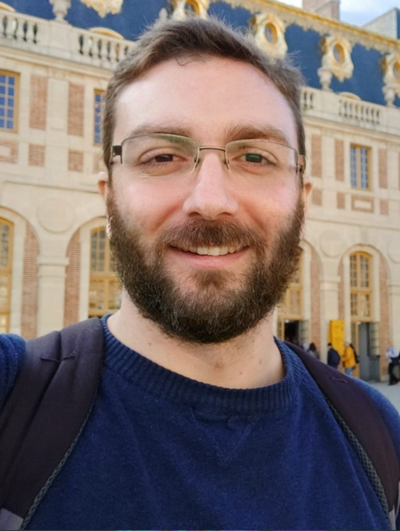Ultra-narrowband communications - A feasability study for the 2.4 GHz Band
Zaher Mahfouz is a PhD student in the department Radio Systems. (Co)Promotors are prof.dr.ir. A.B.J. Kokkeler and dr. A. Alayón Glazunov from the faculty Electrical Engineering, Mathematics and Computer Science.
 The Ultra-Narrowband (UNB) signaling scheme is one of several technologies in wireless sensor networks (WSNs) in the 868 MHz ISM band, particularly focusing on Low-Power Wide-Area Networks (LPWANs), and aiming to enhance sustainability and functionality. This thesis explores the feasibility and challenges of deploying the UNB signaling scheme in the 2.4 GHz ISM band, with a focus on energy efficiency and wireless coexistence.
The Ultra-Narrowband (UNB) signaling scheme is one of several technologies in wireless sensor networks (WSNs) in the 868 MHz ISM band, particularly focusing on Low-Power Wide-Area Networks (LPWANs), and aiming to enhance sustainability and functionality. This thesis explores the feasibility and challenges of deploying the UNB signaling scheme in the 2.4 GHz ISM band, with a focus on energy efficiency and wireless coexistence.
The thesis establishes a comprehensive energy consumption model for star-topology-based WSNs, determining optimal bit rates based on various deployment scenarios. It identifies UNB as an energy-efficient solution for scenarios with long distances, fading, and strict power consumption constraints, as seen in energy-scavenging-powered sensor nodes.
Wireless coexistence is explored through empirical investigations involving Wi-Fi networks as potential victims of UNB interference. The study methodically assesses the UNB interference impact on Wi-Fi links, individually investigating clear-channel assessment mechanism, beacon delivery rate, and transport-layer throughput. Practical experiments highlight the impact of UNB interference on different Wi-Fi devices and modulation schemes. Based on the analysis of the collected measurements, recommendations for UNB sub-bands in the 2.4 GHz band are proposed to promote coexistence.
Additionally, the thesis considers the Vibrating Intrinsic Reverberation Chamber (VIRC) as an efficient and cost-effective experimental environment for studying UNB propagation channels. A methodology for characterizing the VIRC's propagation channel is developed, evaluating the various temporal and spectral characteristics. The VIRC's ability to emulate the UNB channel is established through empirical measurements, aligning with theoretical models.
In short, this thesis contributes insights into deploying UNB in the 2.4 GHz band, addressing energy efficiency, wireless coexistence, and experimental emulation. The findings provide a foundation for enhancing wireless sensor networks' capabilities, paving the way for sustainable, high-performance sensing systems across diverse applications.





